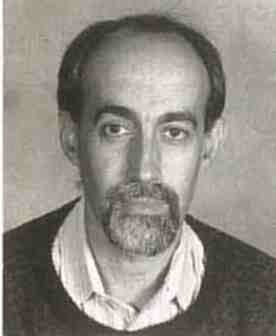


Feature article
Only refined proteins go to Heaven
 Cele Abad-Zapatero.
Cele Abad-Zapatero.
It was a typical macromolecular structure report. Introduction. Materials and Methods. Crystal growth, Structure Solution and Refinement, Results and Discussion of biological implications. But the following statement caught my attention:
"The coordinates have been deposited in the Protein Data Bank with ascension code 1ABC." Was ascension just a misprint or a freudian slip? Had the authors felt that after so many years of hard work the results of their efforts should ascend to some special "heaven for refined proteins"?
In the mid seventies, the Protein Data Bank (PDB) was the depository of the few protein structures that had been determined and partially or fully refined using single crystal X-ray diffraction. Indeed, at that time, only a few proteins made it for several reasons, the most important of which was that it was relatively difficult to solve protein structures by the MIR or MR methods. In addition, some crystallographers were reluctant to make their hard-won structural results available to the community at large for a variety of reasons.
The situation began to change when journals (Acta Cryst., Journal of Biological Chemistry, Science, Journal of Molecular Biology and others) began to require that coordinates be deposited at the time of publication. From that time on, the PDB has been flooded with new macromolecular structures that have to be "tested for goodness", "processed" and eventually made public to the community of structural biologists gratis (or for a modest fee).
Due to an increasing number of macromolecular crystallographers using better hardware to collect data, and improved methods for structure solution and refinement, PDB heaven is not such an exclusive place anymore. In addition to increasing numbers of structures determined by X-ray diffraction methods, in the last few years structures determined by NMR, and even coordinates of model structures have ascended. All these structural results can now be quickly retrieved, and displayed on any computer workstation. I was astounded when one of my molecular modeler colleagues displayed, within seconds, what amounted to several people-years of effort.
If all these structural jewels have not ascended to heaven, they have certainly been elevated to the realm of eternal ideas or abstractions. We can now have an image of "hemoglobin" with its helical contortions holding oxygen very delicately, like a feather, ready to give it away, and to exchange it by carbon dioxide many times per second. Like Plato's images, they are ideal representations of the atomic world beyond our reach. Their shadows appear full of colour in our electronic Platonic Caves by virtue of a few dials and a cathode tube.
However, protein crystallographers, like common mortals, have to deal not with the ideal folds but with the individual variants that often are hard to crystallize, poorly diffracting and still a challenge to solution and refinement. Our joy and satisfaction must lie in collecting as many of these beautiful pebbles as possible, and in understanding the significance of every detail and variation of these atomic masterpieces.
Cele Abad-Zapatero

